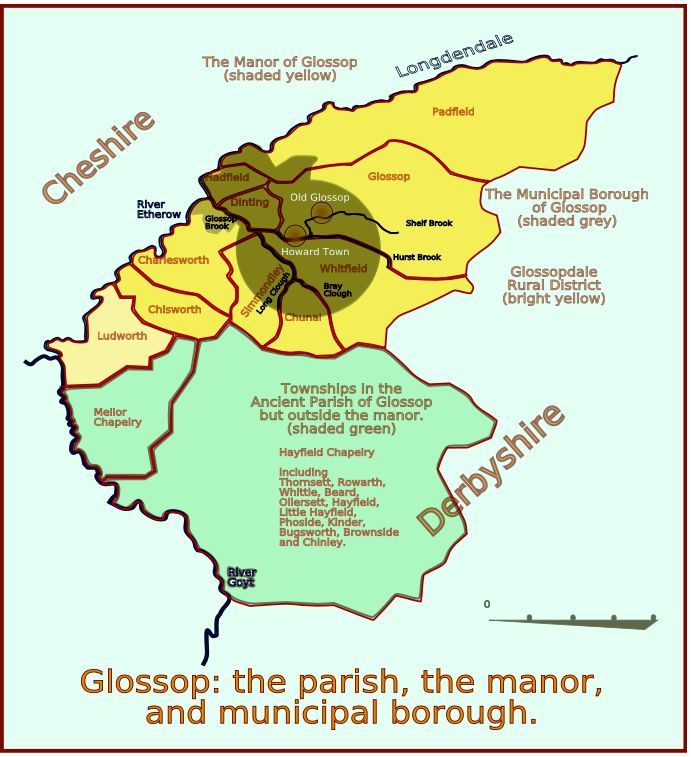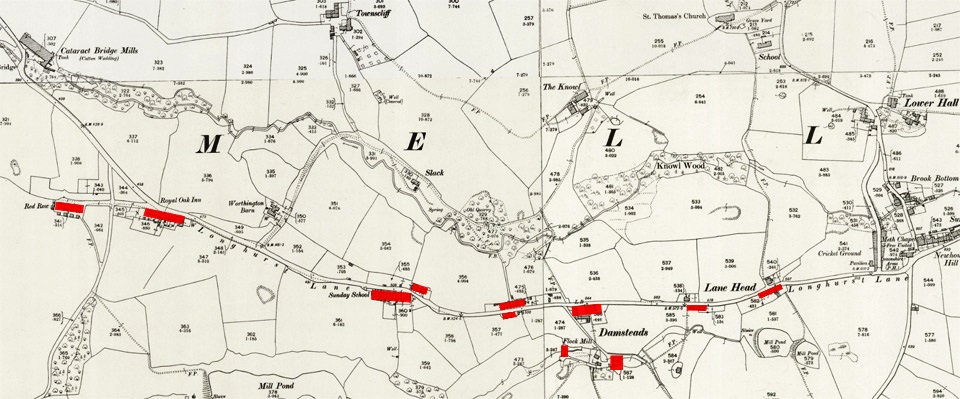Neil Mullineux
The title of the talk was “A virtual walk up Longhurst Lane” but it started with a description of local townships in the eighteenth century. Not just Ludworth and Mellor but the dozen or so in the manor of Glossop and a similar number around Hayfield. It then moved on to turnpikes in the Manchester area with particular concentration on the Chapel-en-le-Frith to Enterclough Bridge turnpike of 1791 where Neil was greatly excited at having found the precise location of Enterclough Bridge.
It is submerged under the Woodhead Reservoir, close to where the A6024 to Holme Moss leaves the Woodhead road. Only when he introduced a branch of this turnpike running from Hayfield to Marple Bridge, did the penny drop - it was this that created Longhurst Lane. Well, perhaps not all of it ,but certainly the section from Marple Bridge to the Royal Oak.

First we were shown the old route. From Marple Bridge along Low Lea Road, following the track that Samuel Oldknow would have taken as a star-crossed lover, visiting his inamorata, Miss Shaw, at Lee Hall. Having passed Mellor Mill we went on to Bottoms Hall and then up Old Hall Lane to the Royal Oak. A very circuitous route so the turnpike trust very sensibly ignored it and constructed a new road direct from the Royal Oak to Marple Bridge. Longhurst Lane still follows that line today.
There was some housing along Longhurst Lane when the turnpike was built in 1791. None at all on the lower part where the road was newly constructed but higher up, from the Royal Oak to the Devonshire, there were occasional rows of cottages serving both agricultural workers and mill workers.

1898 OS map of Longhurst Lane with the scattered habitations highlighted.
This situation did not change for almost a century although in other areas the cotton industry saw rapid expansion. In contrast, both Ludworth and Mellor lost population over the course of the nineteenth century. However, by the 1890s the structure of society was changing. Agriculture and manufacturing was still important but there had been a very large growth in the middle class. In between employers and operatives, between land owners and labourers, had grown a new class of managers, specialists and service providers. Not only that but the ubiquitous spread of railways meant that people no longer had to live within walking distance of work. These people needed somewhere to live, preferably not in the grimy densely populated cities but in pleasant country surroundings. Mellor and Ludworth fitted the bill and at just that time, William Jowett, a local industrialist, was selling some of the parcels of land he owned.
Our virtual walk started, as you would expect, at the Spade Forge, and progressed at a leisurely pace uphill. On the way Neil pointed out various notable features - some well known, others new to a lot of people, but he also filled in with many minor details that collectively told us a lot about the houses and the people living there. The stained glass studio, the abandoned church, the police house, the commercial traveller in corsets. Clement Road is named after the eldest son of the original land owner and Townscliffe Lane used to have a gate across the end. There were more revelations about Cataract Bridge. First, it is not a bridge but an embankment. It floods regularly because water can only go along a pipe that is not big enough for the exceptional rainstorms. And finally, it used to have a factory clock that originally came from Mellor Mill. When the factory was pulled down it disappeared, no one knows where.
The walk continued past the planned but unexecuted Herbert Road, Red Row which seems to point in the wrong direction, and Mon Labore which needed a court order to be completed. A road of many surprises, not all of which were revealed on Monday. Indeed, one questioner asked if Moor End had been missed out by mistake. Not so! As Longhurst Lane ends at the Devonshire our speaker had restricted himself to the advertised programme. In any case, everyone who had gone on the summer stroll in May had learned a lot about Moor End. Perhaps we could have another talk about some of the offshoots that were tantalisingly mentioned in passing - Clement Road, Townscliffe Lane, Knowle Road and Gibb Lane.





